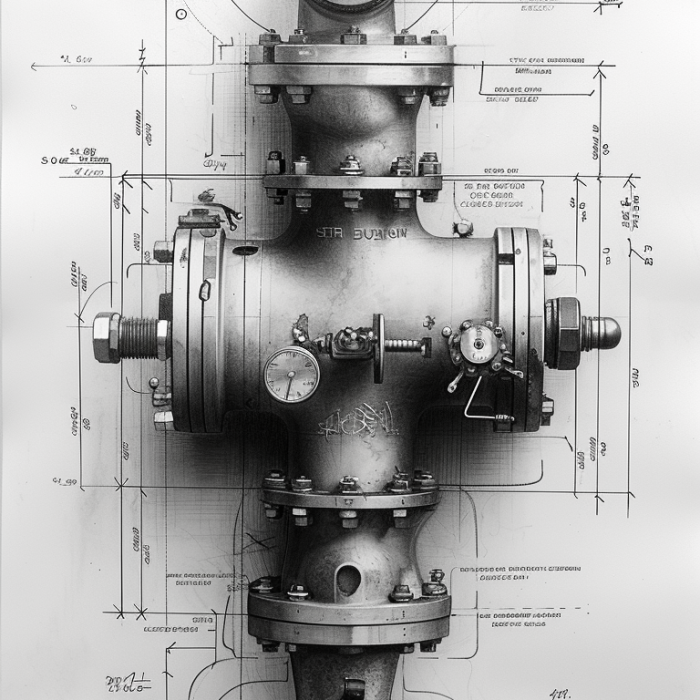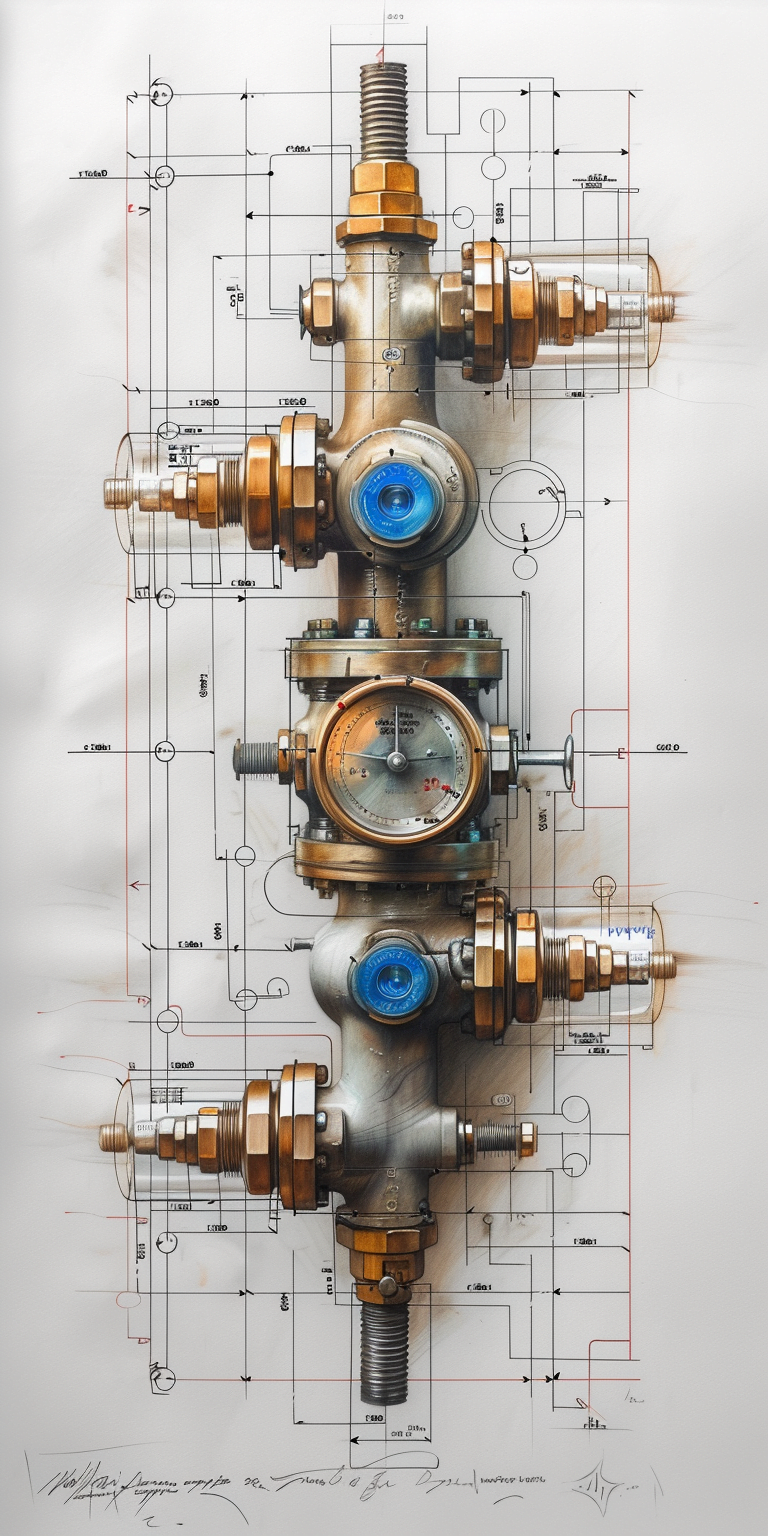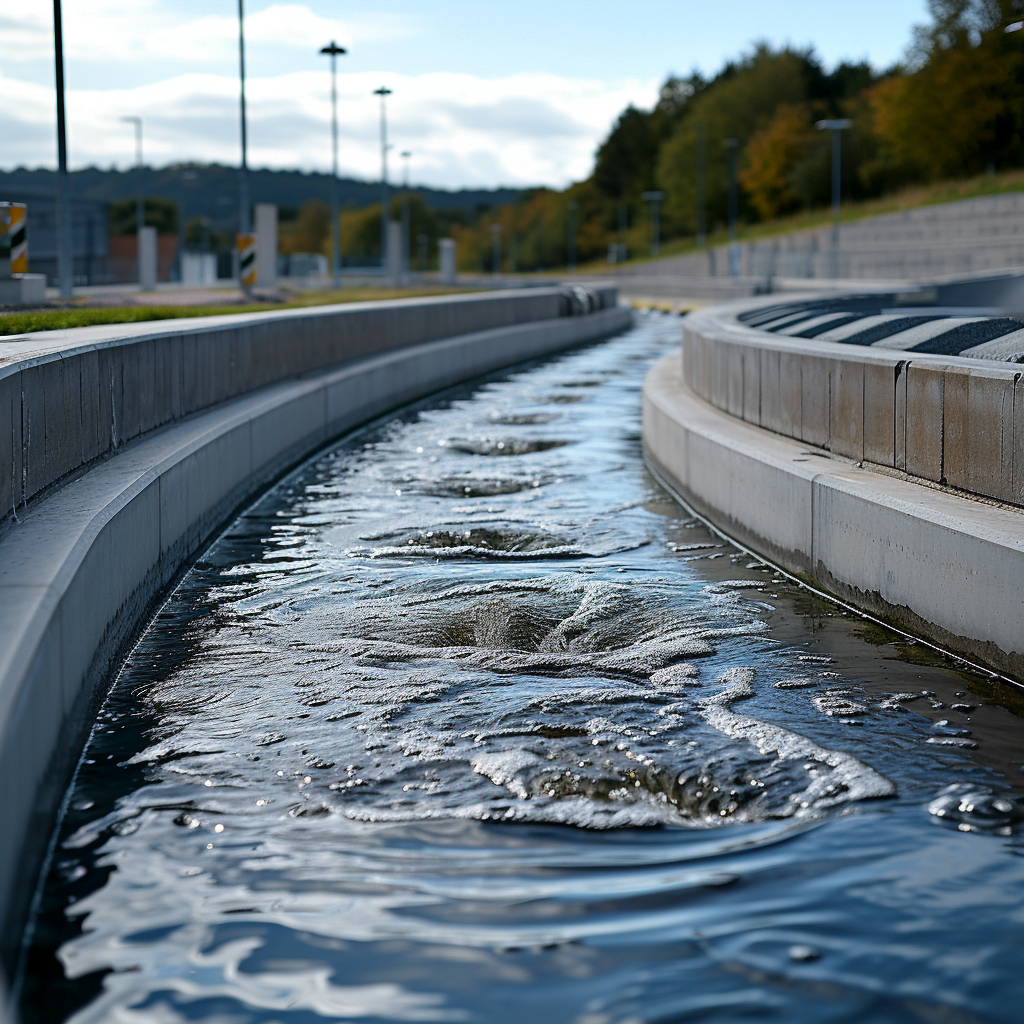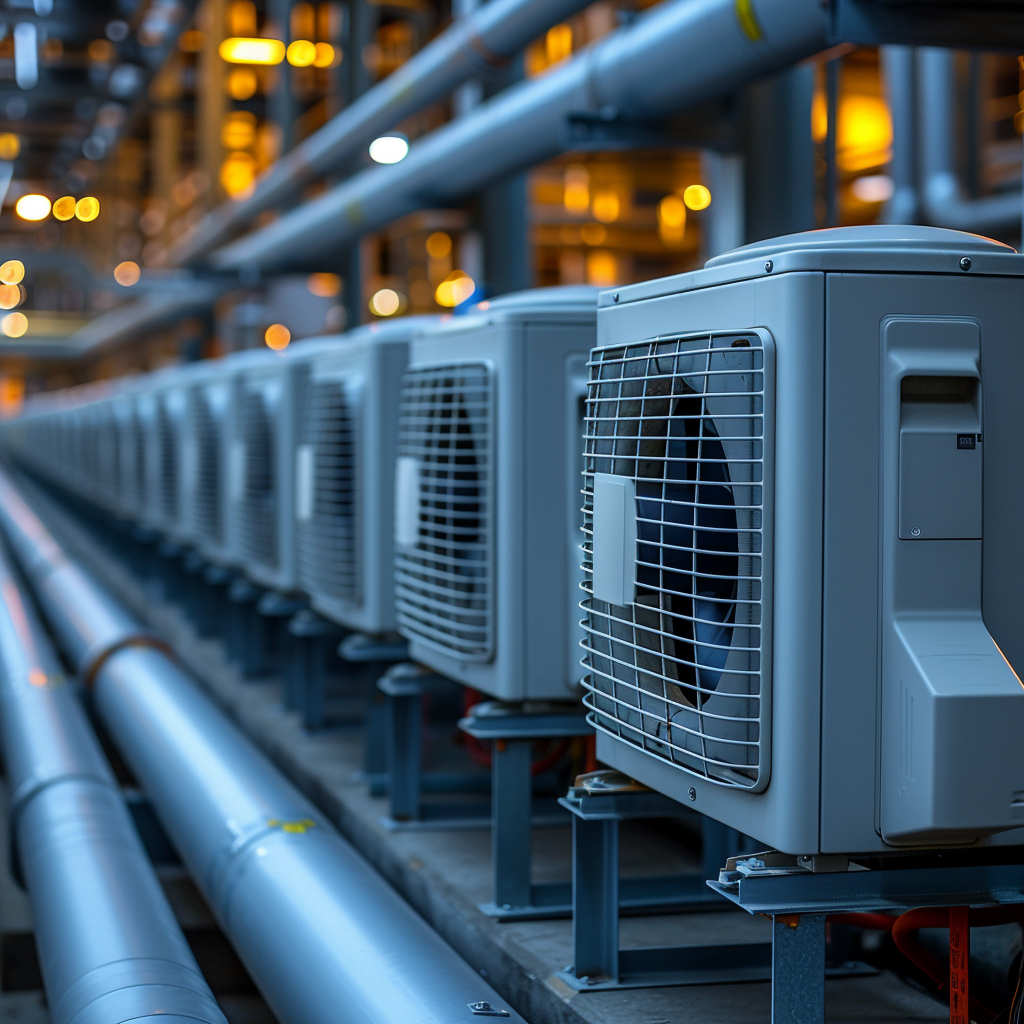Industrial Valves
- Home
- Industrial Valves
Mastering Flow Control
The main types of industrial valves include ball valves, used for controlling flow with a spherical disc; gate valves, ideal for on/off control of fluid flow; globe valves, which regulate flow in a pipeline; check valves, preventing backflow; butterfly valves, for flow regulation in large pipe diameters; and pressure relief valves, ensuring safety by relieving excess pressure. Each type finds applications across industries such as oil and gas, water management, chemical processing, and power generation, tailored to specific operational requirements like flow control, pressure maintenance, and safety.
Pressure reducing valves work by adjusting the flow and pressure within a system to maintain a predetermined downstream pressure. They automatically cut off the flow of a fluid when the set pressure is reached, ensuring stability and efficiency. In industrial settings, these valves are crucial for protecting equipment from damage due to excessive pressure, reducing energy consumption, and ensuring operational safety and reliability across various applications, including water supply, air conditioning systems, and process industries.
When selecting check valves for high-pressure systems, consider the valve type (swing, lift, or disc) for compatibility with flow direction and pressure conditions, material durability against high pressures and corrosive media, and the size and end connections to ensure proper fit and seal within the system. Additionally, assess the valve's pressure rating to match or exceed the system's maximum operating pressure for safety and efficiency.


Industrial Valve Types: From Control to Safety Solutions
The main types of industrial valves include ball valves, used for controlling flow with a spherical disc; gate valves, ideal for on/off control of fluid flow; globe valves, which regulate flow in a pipeline; check valves, preventing backflow; butterfly valves, for flow regulation in large pipe diameters; and pressure relief valves, ensuring safety by relieving excess pressure. Each type finds applications across industries such as oil and gas, water management, chemical processing, and power generation, tailored to specific operational requirements like flow control, pressure maintenance, and safety.
Ball valves operate using a rotatable ball with a hole to control flow, offering quick, quarter-turn on/off operation, ideal for systems requiring fast and frequent operation. Gate valves, with a vertical gate lifted to open, are better suited for applications requiring minimal pressure drop and full, unobstructed flow, typically used where flow rate control isn't critical. Ball valves excel in compact spaces and when leak-proof sealing is essential, while gate valves are preferred in applications demanding minimal turbulence and straight-line flow.
Globe valves are highly beneficial for flow regulation in industrial systems due to their precise throttling capabilities and ability to manage flow rates effectively. They are designed to minimize leakage and offer superior shut-off features, making them ideal for applications requiring frequent adjustments and control over fluid handling. Globe valves also excel in applications where pressure drop is not a critical concern, offering versatility across a wide range of temperatures and pressures.
Butterfly valves are versatile, suitable for both isolation and flow regulation due to their design, which allows for quick operation and the ability to adjust flow with minimal effort. Their compact structure makes them especially suited for large diameter pipes, as they provide effective control with less space and weight compared to other valve types, ensuring efficiency and reliability in various industrial applications.
Industrial Valves in Public Health Engineering
- Control Valves: These valves regulate the flow of water in water distribution systems, ensuring that water is supplied at appropriate pressures and flow rates to meet the demands of consumers. Pressure reducing valves and flow control valves are commonly used for this purpose.
- Check Valves: Check valves prevent backflow of water, ensuring that contaminated water does not flow back into the public water supply, thus safeguarding public health.
- Gate Valves and Butterfly Valves: These valves are used for isolation and control purposes in water treatment plants, pumping stations, and distribution networks.
- Gate Valves and Knife Gate Valves: These valves are used in sewage treatment plants and wastewater collection systems for isolating sections of pipelines during maintenance and repair.
- Ball Valves and Plug Valves: Ball and plug valves are employed for controlling the flow of wastewater and sewage in treatment processes, such as sedimentation, filtration, and chemical dosing.
- Air Release Valves: These valves help release trapped air in wastewater pipelines to maintain efficient flow and prevent pipe damage.
- Diaphragm Valves: Diaphragm valves are used for regulating and controlling the flow of chemicals, such as chlorine or coagulants, in water treatment processes to ensure water safety.
- Pressure Relief Valves: Pressure relief valves protect water treatment equipment from overpressure situations, reducing the risk of accidents and system failures.
- Gate Valves, Ball Valves, and Check Valves: These valves are commonly used in residential and commercial plumbing systems to control water flow and prevent backflow in potable water supply lines.
- Pressure Relief Valves and Pressure Sustaining Valves: These valves help maintain safe pressure levels in water storage tanks and distribution networks, preventing potential damage to infrastructure.
- Deluge Valves and Alarm Valves: These valves are used in fire protection systems to control the flow of water to sprinklers and fire hydrants, helping to mitigate fire-related risks and protect public safety.


Industrial Valves in Fire Protection
Alarm check valves are designed to control the flow of water in fire sprinkler systems and provide a means of monitoring system integrity. They incorporate a clapper mechanism that closes in response to backflow pressure but allows forward flow during a fire event. Alarm check valves are equipped with alarm ports to detect water flow and signal the activation of sprinklers.
Pre-action valves are used in pre-action sprinkler systems, which combine aspects of dry and wet pipe systems. They are equipped with a pre-action detector system that must be activated before water is released into the pipes and discharged through the sprinkler heads. This adds an extra layer of protection against accidental water discharge.
Pressure relief valves are safety devices used to protect fire protection systems from overpressure situations. They open to release excess pressure, preventing damage to the system and equipment.
Industrial valves in Heating, Ventilation & Aircon (HVAC)
Pressure Independent Control Valves (PICVs) are advanced control valves designed for use in HVAC systems to maintain a constant flow rate irrespective of pressure variations. They are particularly useful in maintaining precise temperature control in hydronic systems.
Control valves are designed specifically for precise and continuous control of fluid flow, temperature, or pressure in HVAC systems. They are often used in applications such as variable air volume (VAV) systems, where maintaining precise temperature and flow control is critical.
Zone valves are used to control the flow of hot or chilled water in specific zones within a building's HVAC system. They are often controlled by thermostats and are essential for zone heating and cooling.
Solenoid valves are used for controlling the flow of refrigerants in HVAC systems, such as in air conditioning and refrigeration units. They can be electrically controlled to open or close rapidly in response to system demands.
Balancing valves are used to balance the flow of water or air within an HVAC system, ensuring that each part of the system receives the required flow rates for efficient operation.

Looking for a reliable and trusted name in flow control solutions?
We welcome and collaborate to bring techno commercial solutions for our clients and our stakeholders.







